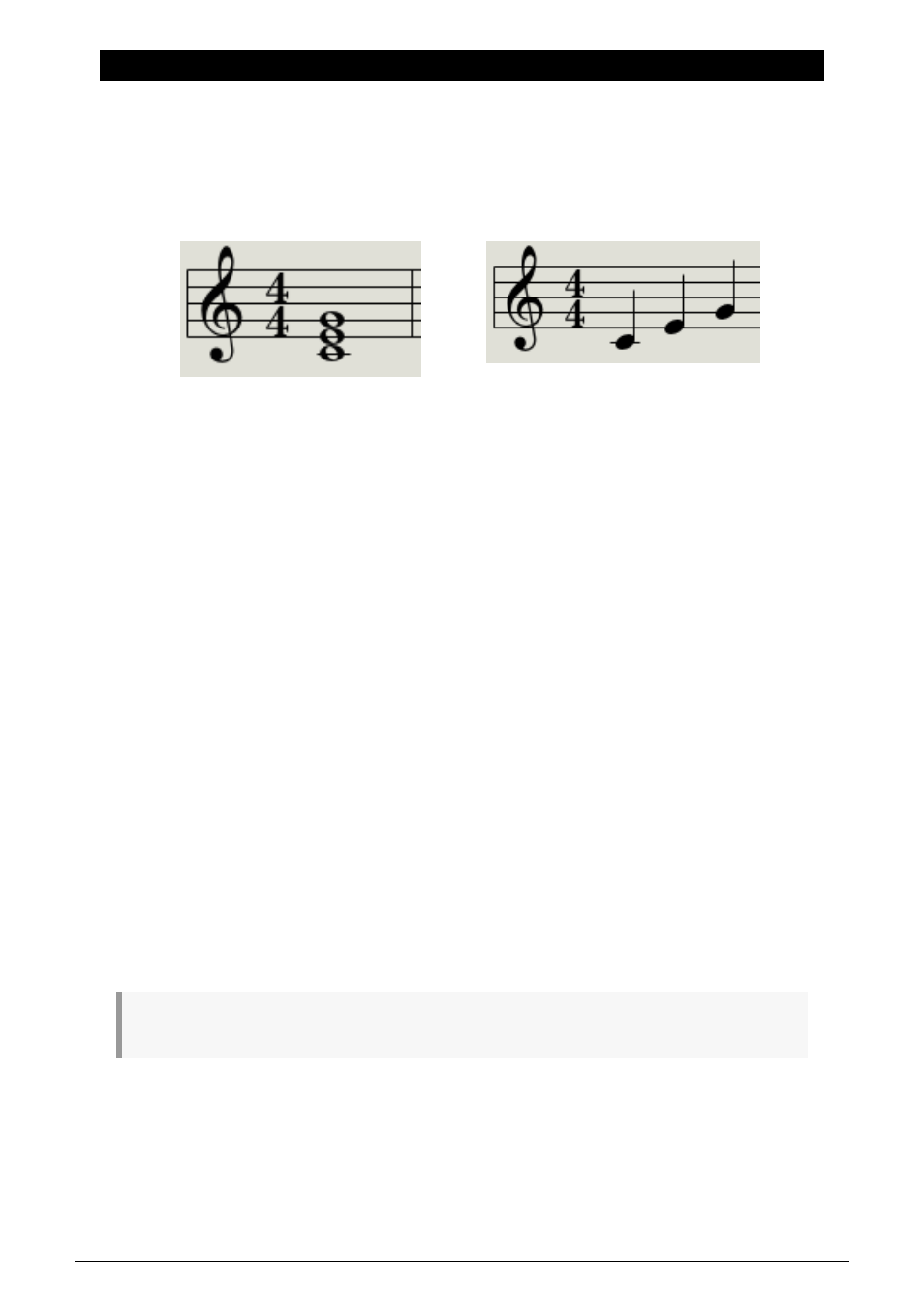The arpeggiator, What’s an arpeggiator, Arpeggiator features – Arturia KeyStep - Controller / Sequencer User Manual
Page 37: Chapter 5 [p.32, Chapter 5: the arpeggiator [p.32

5. THE ARPEGGIATOR
5.1. What’s an arpeggiator?
‘Arpeggio’ is a musical term that basically means ‘the notes of a chord played one after the
other’. For example, if you play a C chord and then play its component notes C, E, and G
independently, you have played an arpeggio in the key of C.
An example of notes in a chord The same notes as an arpeggio
And you can play those three notes in any order and still have played an arpeggio in the
key of C.
An arpeggiator, then, is a form of music technology that will take a group of notes played
simultaneously on a keyboard and turn them into an arpeggio.
5.2. Arpeggiator features
The KeyStep arpeggiator provides lots of different ways to arpeggiate the notes you play on
the keyboard. These features we’ve covered previously:
• Setting the rate or tempo
• Time division settings
• Hold / sustain function
)
• Arpeggiate the Chord memory
• Independent swing and gate settings
• Skip encoder values
and
• Restart arpeggio from the first note
We’ll cover these features in the sections ahead:
• The eight modes that determine the note order
• Building an arpeggio of up to 32 notes
• Pause an arpeggio in mid-stream and then resume the pattern
The Record button is inactive in Arp mode.
Arturia - User Manual KeyStep - The Arpeggiator
32